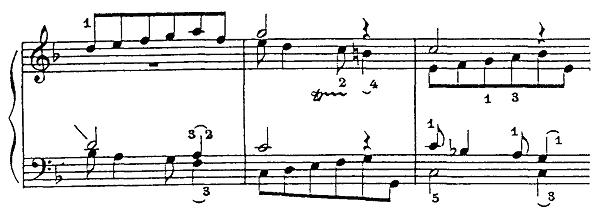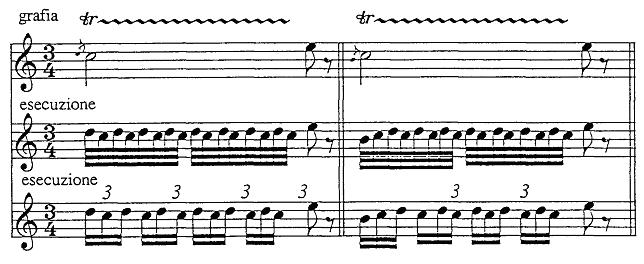
The trill consists of a quite rapid succession of the royal note and its upper auxiliary. The trill generally begins and ends with the royal note. Its duration equals the value of the note it is set on. Its graphic symbol is made up by the consonants “tr” along with a wavy line (1).
- Direct trill:
- Inverted trill:

The trill can have a preparation:

And a closing:

Or a preparation as well as a closing (the symbol of the alteration refers to the auxiliary note of the trill):

The trill can even be double or on a chord:

The trill can occur with following exceptions:
- When the royal note of the trill is preceded by a note with the same height as itself, the trill starts with the upper auxiliary. Equally, if the note following the trill is identical to the royal note, the trill ends with the auxiliary note.
- When it is at the end of a period, we suggest executing the trill with closing even if the latter is not indicated.




